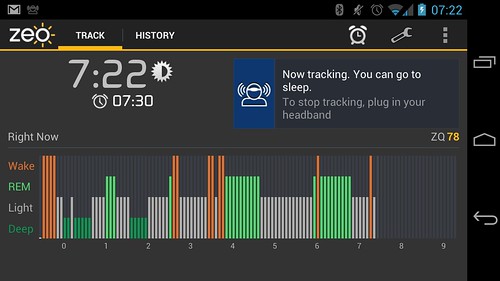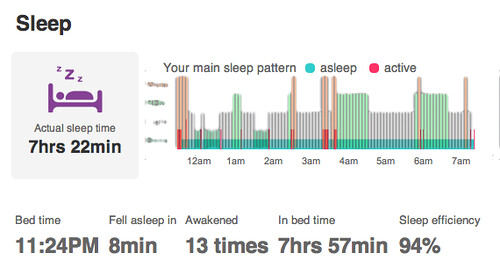Smart Interconnected Devices Hackathon
August 13, 2012 | CommentsIf you're at all interested in this sort of thing, you might want to wander along to the Smart Interconnected Devices Hackathon at Google Campus this coming Saturday: a chance for Android developers to Plug Things Together in interesting configurations...
Superoptimising
August 06, 2012 | CommentsI posted this onto G+ last week, and totally forgot to crosspost it here:
My superoptimiser has found a more efficient version of Math.abs() than that which ships with the Java runtime, which I think demonstrates that the approach of superoptimisation /can/ have merit for VMs - whether by producing shorter code than the optimiser inside the Java compiler, or by finding non-obvious algorithms. Either that, or the Math.abs() that ships is a weak implementation...I'm now running a search for Math.max() and Math.signum() (the latter being the target of the original Massalin experiments). My suspicion is that signum() will need a longer sequences than I'm currently generating; I can add one operation to my current sequences (which take 13 hours to generate on a single EC2 instance) by parallelising the process across IRO 500 EC2 machines. Going beyond that would need 25,000 machines which at $1,500/hour will be well out of my budget. So, fingers crossed...
It's probably worth optimising the code further, but I'm completely out of ideas for order-of-magnitude improvements and I've spent quite a bit of time inside a profiler over the last couple of weeks.
Still, feels like I've achieved /something/ here.
Since then, a couple of small updates: I've run a search for Math.max() and found another sequence shorter than that which ships with the JVM; so in two cases I now have superior superoptimised code. Before I start the write-up proper, I'm spending another week looking into a more efficient Math.signum() function by parallelising the superoptimiser across a few hundred Amazon EC2 instances; I think this will buy me another instruction, which might juuuuust be enough to get something. We shall see.
Design Notes For The Web
July 30, 2012 | CommentsSteph's pointed to this interesting set of documents. I'm going to dip into them over the next few weeks, but particularly enjoyed hearing how they're structured:
"I have found that, having started this set of notes in 1990 in the (for me) novel medium of hypertext, it has been difficult to tear free of it: my attempts to lend hierachical or serial order have been doomed to failure. Further, as ideas and these web pages have evolved, it has been important for me to be able to reorganize my thoughts, grab a new leaf, shake the tree and regard it as the root. So the reader needs to be aware of this, that each page may be an attempt to put across a given concept serially, but if you are looking for an order of concepts and subconcepts, you have as much hope as you would with words in the dictionary. "
Tracking sleep with two different sensors
July 23, 2012 | CommentsI've been following the Quantified Self for a little while now, ever since Colin Hayhurst first mentioned them to me; and Kate has a similar enthusiasm for the quantitative, so we've both been tracking aspects of ourselves: between us weight (Withings), diet (manually), sleep (Zeo), and exercise (Runkeeper, Fitbit).
One of the modules of my Master's this year was Pervasive Computing, in which we spent a great deal of time looking at sensors and the real-world difficulties of extracting useful information from them. I did a project looking at LEDs, light sensors and morse code which I wrote about briefly here (and will post the full text of, once the course is over).
One key lesson from this was the difficulties of ensuring consistent useful results from different sensors; so when I noticed that Fitbit offers to track your sleep patterns, and Kate's Zeo did the same, I thought it'd be interesting to compare the results one gets from each. Fitbit straps to your wrist and detects hand movement, inferring sleep from a lack of such movement; Zeo monitors brain waves.
So a few nights ago I strapped both to myself and managed nonetheless to drift off. Here's what the Fitbit told me about my night:
Here's the Zeo for the same time period:
I was quite surprised at how close they both were. Here's the two graphs scaled to an equivalent size and superimposed:
This seems to suggest that I'm twitching physically not just when I wake up, but when I move between different types of sleep…
As a result of this, I'm much more confident in both products, as they seem to be measuring something consistently using two completely different methods; which, funnily enough, is an approach which my course tutor Dan Chalmers covered in his pervasive computing textbook...
Guardian iPad figures
July 18, 2012 | CommentsThe Guardian have released figures for their iPad product - 17,000 iPad subscriptions, an unspecified number of Kindle ones.
I was trying to work out if this is good or bad. It's bad, because that's a small number (£2m gross revenue p.a. before Apple's cut). But with daily print sales of 211,511 in June, that makes iPad 7.5% of (print+iPad) readership.
I wonder how that compares to the percentage of Guardian readers who own iPads... my gut would be plenty of room for growth. I'm curious about those Kindle figures, which would reach a different audience... and I wonder whether there's any plan for a paid-for Android product?
Update: after a chat on Twitter with Benedict Evans: there are apparently 5.5m iPads in the UK, so iPad ownership here is 10%; not all those iPad subscribers are UK, of course, but it's a useful comparison. Not sure if we could conclude that iPad ownership in Guardian readers accords with that though, according to their own stats on readership their audience is roughly average in terms of age and gender, but skews towards being better educated and more likely to be AB than most. Accordingly I'd expect iPad ownership to be way higher - double? - for them.


